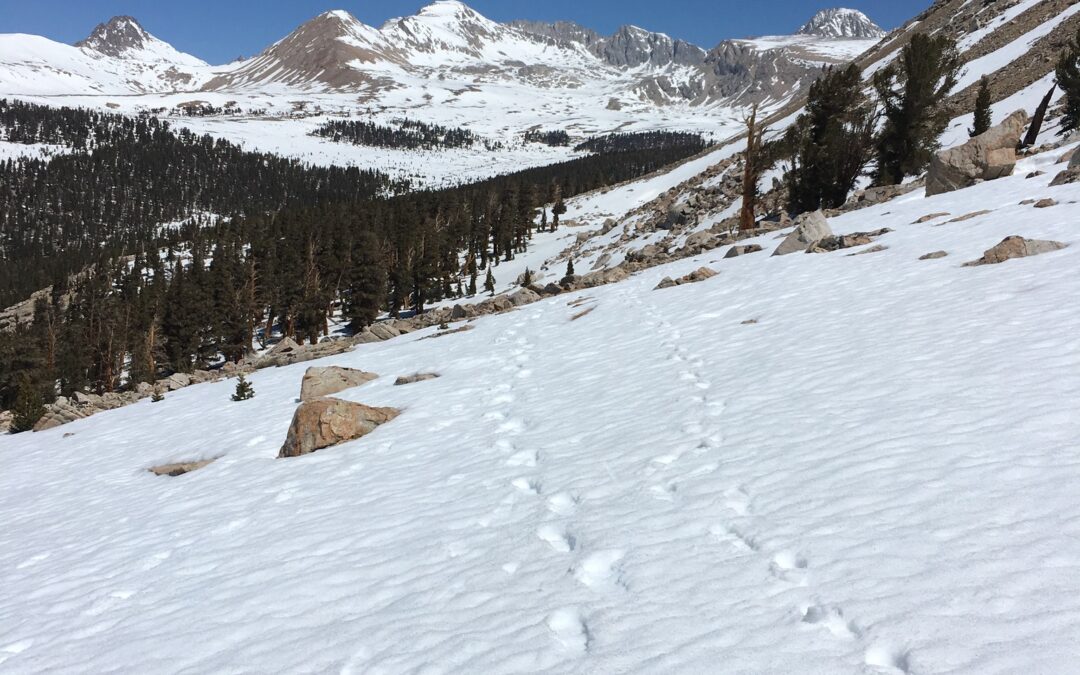“Flip-time for ’23,” expanded:
There are additional on-trail safety concerns this year that make the case for a solid “Flip-and-Return,” 1) broken bridges and 2) the location of the herd with respect to the onset of the Thaw in the Sierra.
If hikers don’t (or aren’t able to) inject themselves into the Sierra while it is still frozen before the Thaw (it’s too late, now), there had best be little snow to melt out and swell those creeks into rivers, like after the more “normal” to mild winters of the recent past.
With the huge snowpack still existing above 11,000 feet and about ready to melt out, once the Thaw starts (which will be soon), and the masses of PCT thrus yet to arrive at KMS and enter the Sierra, I do not see it to their advantage to try and push through to the north any farther than Kearsarge Pass, if the Thaw starts with any fervor.
If it does not, as may be what is shaping up with the weather being so cloudy, cool, and rainy at trail elevation for the next few weeks, the snowpack will simply consolidate, melt, and settle and the creeks will only gradually rise.
Snow-wise, this will be good for the safety of all early-season backcountry hikers, but when bridges are out and broken beyond any safe use over huge rivers of flowing snow-runoff, the effort to seek cross-country routes up or down-canyon to avoid a dangerous, immersion-ford may be risky in its own way and not worth it.
Thus, the encouragement, this year, to “Flip-and-Return.”
Savvy?
[photo: What people need to get from the pictures that other PCT thru-hikers post, regarding the snow conditions present in those pictures, is whether their footprints are sinking into the snow’s surface and how much. If the snowpack is still hard enough to support a person’s weight with a pack, there will be shallow indentations, at best. Obviously, if the snowpack is already thawing out or has a lot of air in it from the winter, you’ll see lots of full-length postholing going on.
This picture, taken from Bighorn Plateau to Forester Pass, depicts an environment that is warming through the day such that only the surface of the snow starts melting and softening. The rest of the snowpack below the surface is still frozen or sufficiently consolidated to hold a hiker’s weight.]

